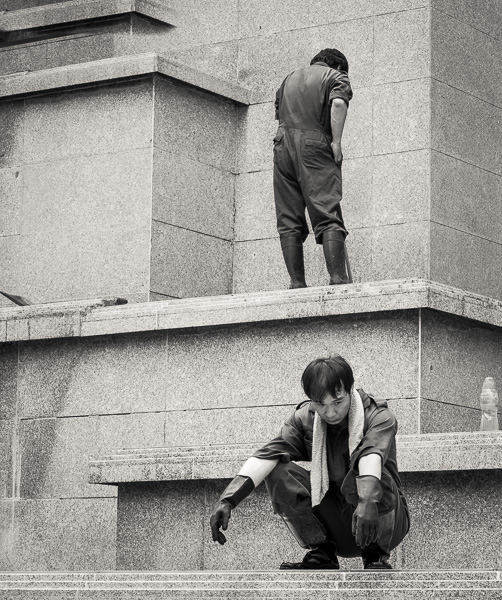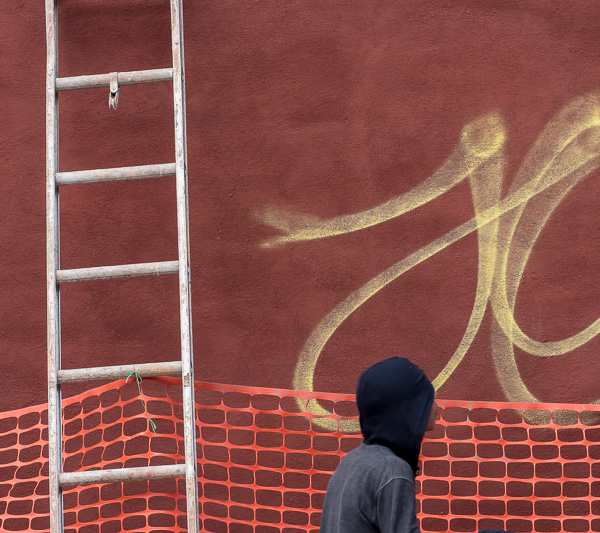by Sharon Tenenbaum
Ever wonder what differentiates Good from Great Art? What gives some images that extra superior edge in comparison to all the rest. What is going on in our subconscious mind when we look at these images? What gives some images that extraordinary ‘wow’ factor and some are just okay.
As a fine art photographer, I was intrigued with these questions and I spent a few years researching everything I could get my hands on that was about the study of the brain and how it relates to our interpretation of the visual world. My research lead me to the difference in the way the two hemispheres of our brain work as each ‘thinks’ and ‘sees’ differently and this is where I found the answers to my questions.
Have a look at this image:

Now have a look at this one, the same image but rotated horizontally.
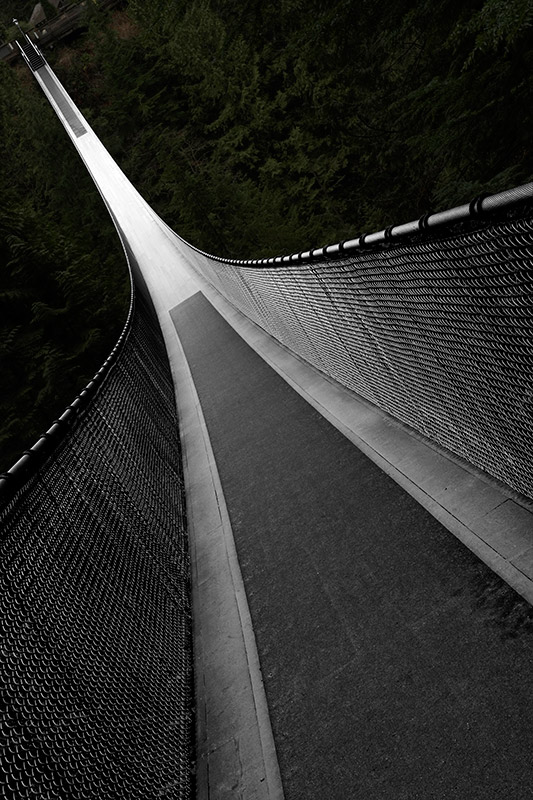
Did one appeal to you more than the other?
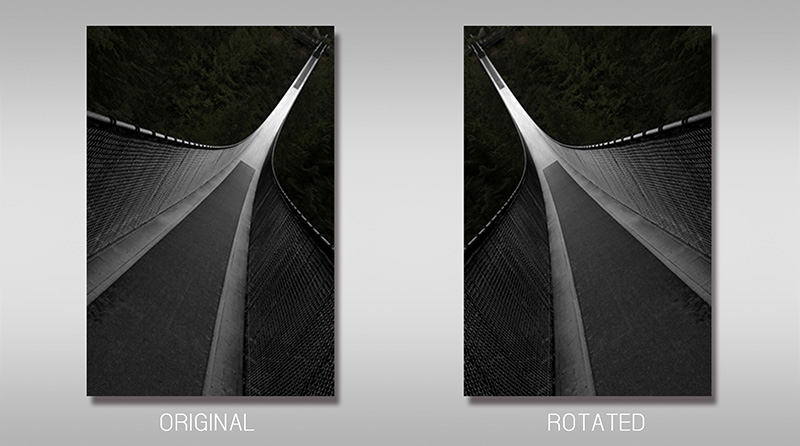
Well, in over 90% of people asked, image number one was more appealing and I can tell you that there is a reason for that.
We all suffer a bit from split personality. Our brain, as scientists have found, is divided into two completely separate hemispheres, Left and Right and each reigns over two separate domains. The Left hemisphere is in charge of sequential, analytical and logical thought; it is the home of speech and language. The Right hemisphere is more spatial and visual; it is nonlinear, intuitive and holistic (sees the big picture). In computer terms, the Right brain operates like a parallel processor while the Left is like a serial processor.
So now you might ask: Well, how does all this apply to art? I will answer this question with example of the Capilano Bridge I have shown above but will first touch on another distinct difference between the two hemispheres and that is that they are contralateral. Motoric skills of one side of the body are controlled by the contralateral part of the brain, so each time you move your right hand, it is a region in the Left hemisphere of your brain that is in charge of doing that. This fact is mainly apparent in stroke patients. People that experience a stroke in the Left hemisphere, when blood supply is impaired to that part of the brain, experience a paralysis of the right side of their body and vice versa.

Additionally, the trivial movement like moving your head to the right is controlled by parts in the Left side of the brain. This also applies to the subtle eye movement occurring during reading or scanning the horizon. Now, after explaining a few of the fundamentals, I can touch on how these biological differences affect our interpretation of art.
In art, and namely in photography we may have elements within our image of which their geometry creates a line that leads our gaze from one point within the frame to another. These organically created lines are called in art lingo, Leading Lines. Examples of leading lines can be a meandering path through a countryside landscape or a straight side of a building. The point I wish to make in this section is that the direction in which the leading line guides our gaze makes a difference to the way we interpret the image.
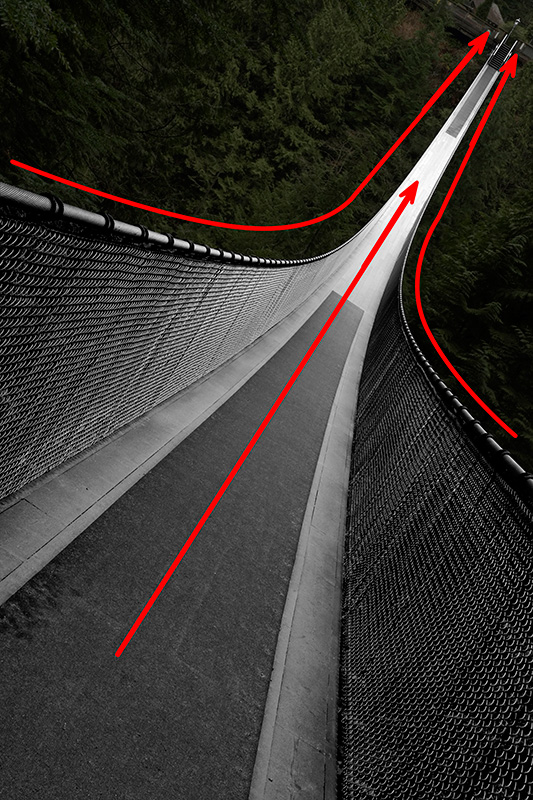
In the Capilano Suspension Bridge Image, there are three leading lines that we see instantaneously (simultaneous thinking) but don’t register till giving the image a closer look.
The two outside railings create the diagonal leading lines guiding the viewer’s eyes from the bottom left to the converging point at the top right. The fact that the lines are not completely straight but have a curvature, adds to the softness and flow of the image. The third line is the walkway sandwiched between the railings leading your gaze even more strongly to the ‘peak’ point.
Overall in this image the leading lines are guiding our gaze from left to right in a continuous manner stimulating the left side of the brain, which in nature is a sequential linear thinker.
By moving your gaze to the right you are approaching the Left brain, as if you are knocking on a door waiting for someone to answer, you have something to tell them, now you have to make sure that you are talking to them in a language that they understand. The Left brain understand lines.
The combination of these two characteristics: 1. Moving your gaze to the right and 2. Continuous, linear movement which creates a natural flow and ease to the image, ‘talks’ to us in the innate language our Left brain understands.
Understanding these differences will help you develop and cultivate tools that will assist you to consciously see the world differently.
When you see the world differently, your images will be different
Instead of focusing on color tones and post-processing, which I regard as ‘icing on the cake’, this engrossing study of how our two hemispheres interpret the world will help you improve on your intuitive compositional skills.
There is an eBook available at eBook-Left-Brain-Right-Brain
Click to Visit Sharon’s Web Site
Email Sharon at [email protected]
September, 2013
Read this story and all the best stories on The Luminous Landscape
The author has made this story available to Luminous Landscape members only. Upgrade to get instant access to this story and other benefits available only to members.
Why choose us?
Luminous-Landscape is a membership site. Our website contains over 5300 articles on almost every topic, camera, lens and printer you can imagine. Our membership model is simple, just $2 a month ($24.00 USD a year). This $24 gains you access to a wealth of information including all our past and future video tutorials on such topics as Lightroom, Capture One, Printing, file management and dozens of interviews and travel videos.
- New Articles every few days
- All original content found nowhere else on the web
- No Pop Up Google Sense ads – Our advertisers are photo related
- Download/stream video to any device
- NEW videos monthly
- Top well-known photographer contributors
- Posts from industry leaders
- Speciality Photography Workshops
- Mobile device scalable
- Exclusive video interviews
- Special vendor offers for members
- Hands On Product reviews
- FREE – User Forum. One of the most read user forums on the internet
- Access to our community Buy and Sell pages; for members only.








